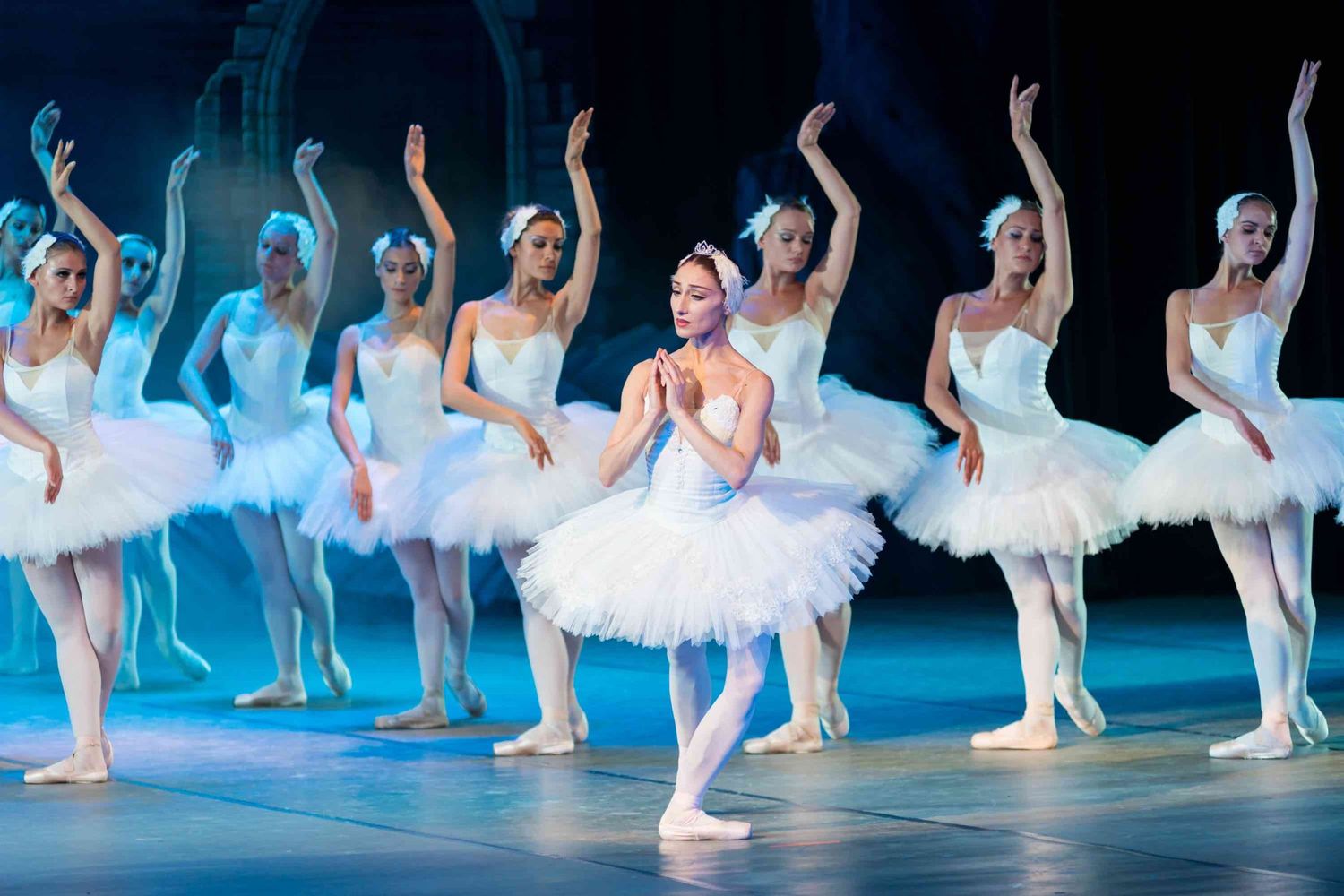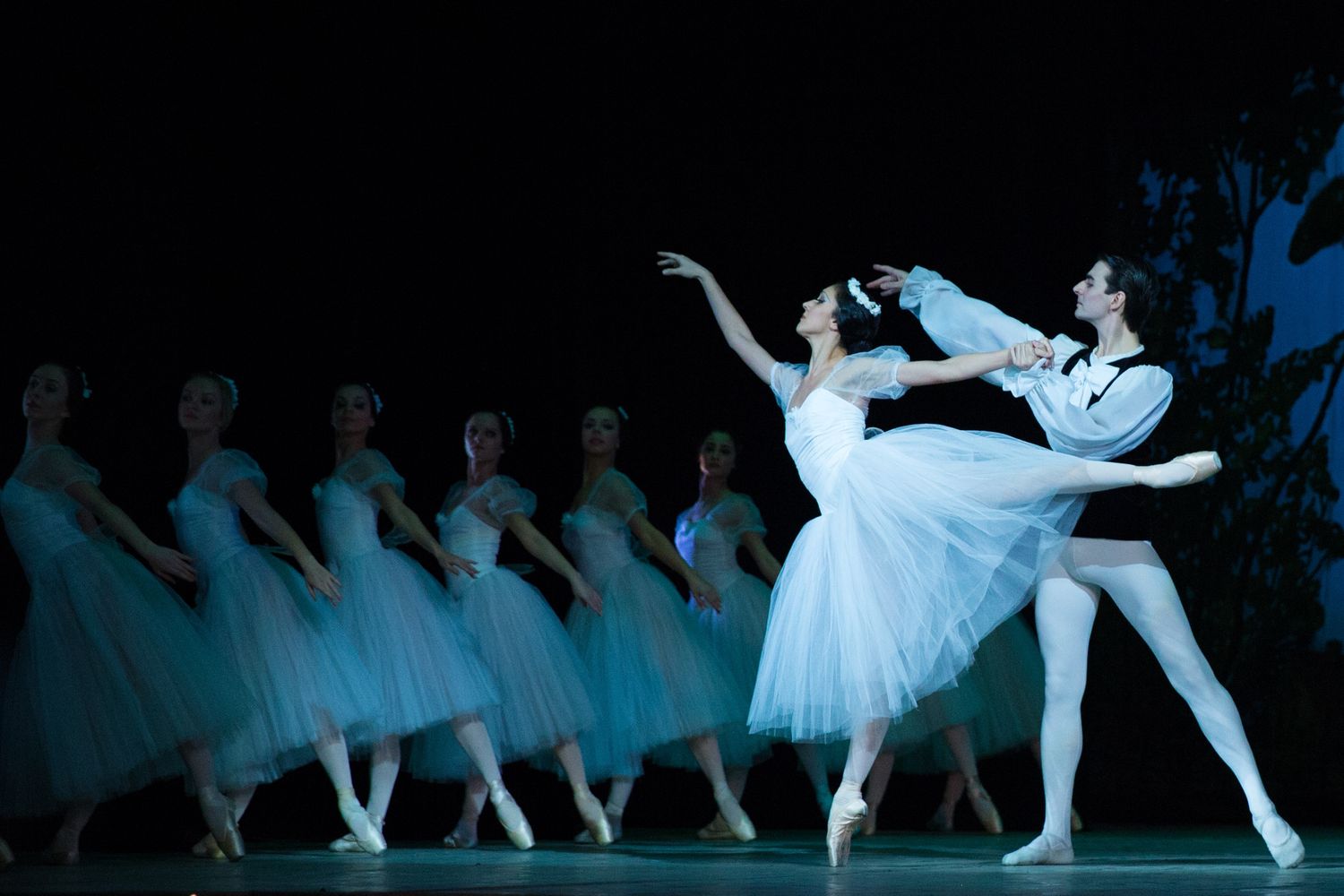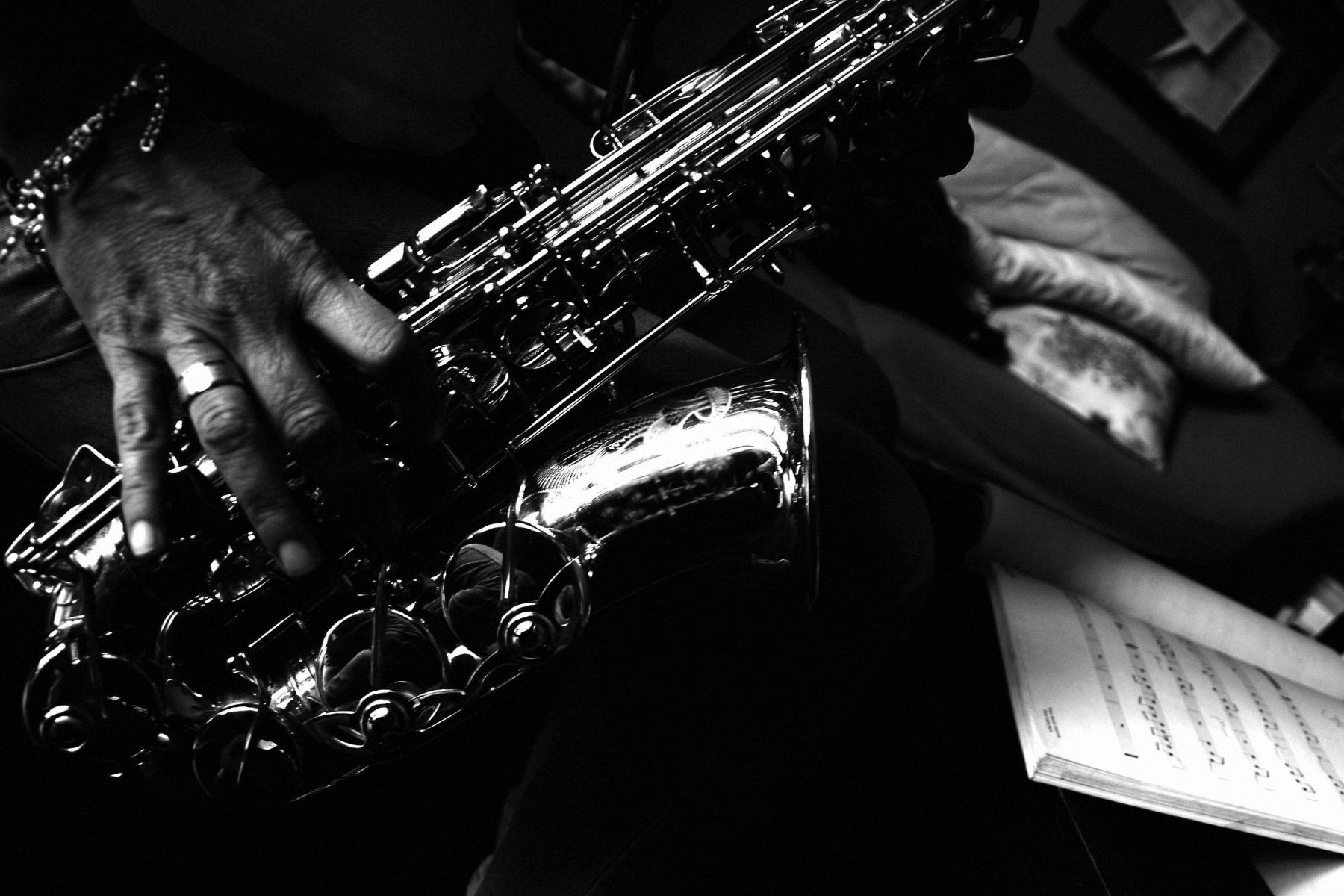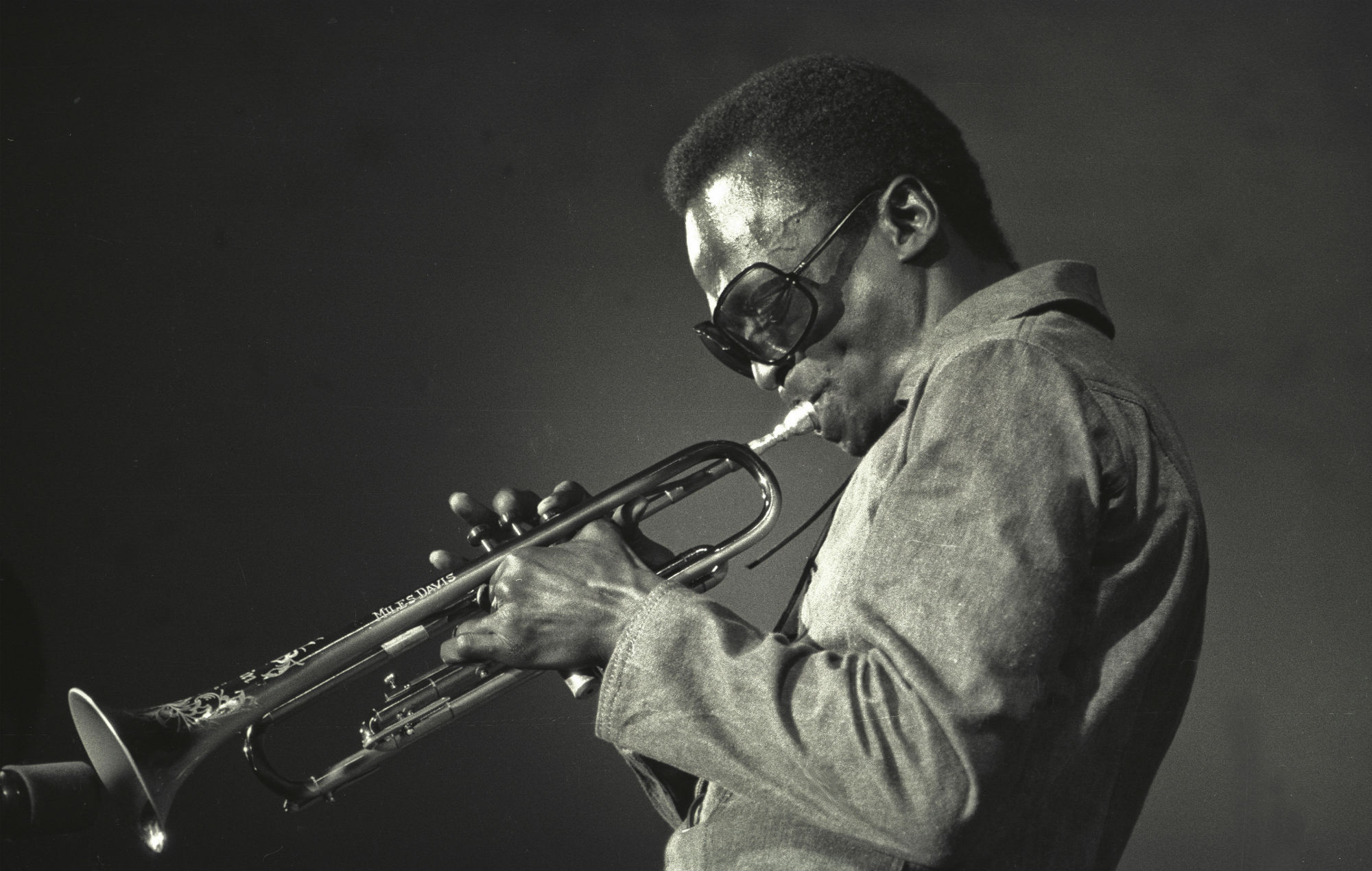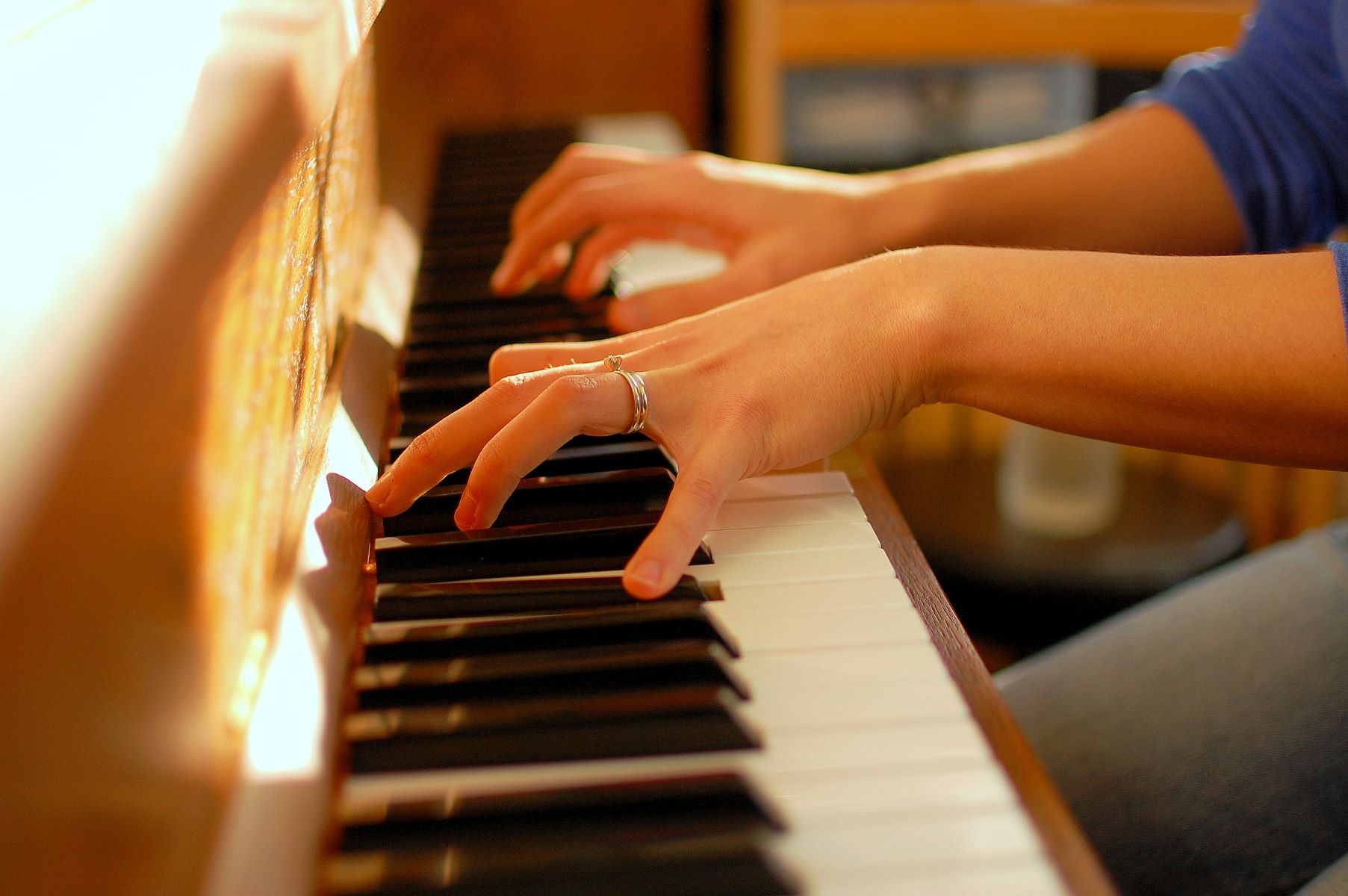Home>Events & Info>Opera>Why Is Opera Popular


Opera
Why Is Opera Popular
Published: January 6, 2024
Discover the allure of opera and why it continues to captivate audiences worldwide. Explore the art, drama, and history that make opera a timeless and enchanting form of entertainment.
(Many of the links in this article redirect to a specific reviewed product. Your purchase of these products through affiliate links helps to generate commission for AudioLover.com, at no extra cost. Learn more)
Table of Contents
- Introduction
- Historical Background of Opera
- Characteristics of Opera
- Emotional Expression in Opera
- Opera as a Fusion of Art Forms
- Opera and Cultural Significance
- Opera’s Appeal to a Wide Audience
- Opera as a Spectacle
- Opera for Social Critique
- The Role of Singers in Opera
- Opera as a Form of Entertainment
- Conclusion
Introduction
Opera is a culturally rich and captivating art form that has enthralled audiences for centuries. With its combination of music, drama, and visual spectacle, opera offers a unique and immersive experience that transports viewers into another world. It has a long and storied history, dating back to the late 16th century, and has evolved to encompass a wide range of styles and genres.
At its core, opera is an art form that uses music and singing to tell stories. It combines the expressive power of music with the emotional depth of theater to create a truly immersive and transformative experience. Whether it’s a tragic love story, a historical epic, or a comedic romp, opera has the ability to elicit a wide range of emotions from its audience.
One of the most distinctive features of opera is its use of vocal technique. Opera singers are highly trained professionals who possess incredible vocal power and control. They are able to project their voices over an orchestra and convey the nuances of the music and text in a way that is both technically impressive and emotionally engaging.
Opera is also a collaborative art form, bringing together composers, librettists, directors, set designers, and performers to create a cohesive and visually stunning production. The elaborate sets, intricate costumes, and dramatic lighting all contribute to the overall spectacle of opera.
Throughout history, opera has not only entertained audiences but has also served as a platform for social and political commentary. Many operas explore themes of love, power, justice, and morality, shining a spotlight on the human condition and offering insights into the complexities of society. From Mozart’s “The Marriage of Figaro” to Verdi’s “Aida,” opera has been an important vehicle for social critique and artistic expression.
In recent years, opera has gained a new level of accessibility and popularity. A diverse range of productions, from traditional classics to contemporary interpretations, are being staged in opera houses and theaters worldwide. The use of surtitles and translations has made opera more accessible to non-native speakers, allowing a wider audience to appreciate the beauty of the music and storytelling.
The appeal of opera lies not only in its artistic mastery but also in its ability to transcend language and cultural barriers. It is a form of universal expression that speaks to the human experience and evokes a range of emotions.
In this article, we will delve deeper into the historical background, characteristics, cultural significance, and audience appeal of opera. Join us on this journey as we explore the captivating world of opera and uncover the reasons behind its enduring popularity.
Historical Background of Opera
The origins of opera can be traced back to the late 16th century in Italy. It emerged during the Renaissance, a period marked by a revival of interest in the arts and a new focus on humanism. The Florentine Camerata, a group of intellectuals and musicians, can be credited with laying the foundations of opera as we know it today.
The Camerata sought to recreate the style of ancient Greek drama, which was believed to be performed with a combination of music and spoken text. They aimed to revive the dramatic power of Greek tragedy by adding music to the spoken word. This fusion of music and theater gave birth to the genre of opera.
One of the earliest and most influential operas is Jacopo Peri’s “Dafne,” composed in 1597. This work marked a significant departure from the musical conventions of the time, incorporating recitative (a form of musical speech) and aria (a solo song) to convey the emotions and actions of the characters.
Over the next few decades, opera flourished in Italy, with composers like Claudio Monteverdi and Alessandro Scarlatti pushing the boundaries of the genre. The 17th and 18th centuries witnessed a surge in opera production, spreading to other European countries such as France, Germany, and England.
In Italy, opera became an integral part of courtly entertainment, with lavish productions staged to entertain the nobility. The most famous opera houses, like La Scala in Milan and the Teatro di San Carlo in Naples, were built during this time and still continue to showcase opera today.
During the Baroque era, the music of opera became increasingly complex and ornate, reflecting the grandeur and opulence of the period. Composers like Georg Friedrich Handel and Jean-Baptiste Lully displayed their mastery through intricate and virtuosic vocal and instrumental writing.
In the 19th century, opera experienced a wave of Romanticism, with composers like Giuseppe Verdi and Richard Wagner stamping their mark on the genre. Verdi’s operas, known for their powerful melodies and deeply emotional storytelling, captivated audiences across Europe. Wagner, on the other hand, sought to create a new form of opera known as music drama, which integrated music, poetry, and theatrical elements to create an immersive experience.
The 20th century saw further experimentation and modernization of opera, with composers like Igor Stravinsky and Benjamin Britten introducing innovative and avant-garde techniques. Today, opera continues to evolve, with contemporary composers embracing a diverse range of styles and themes.
From its humble beginnings in Italy to its global influence, the historical journey of opera is a testament to its enduring appeal and adaptability. Its ability to combine music, drama, and visual spectacle has made it a beloved form of artistic expression that continues to captivate audiences around the world.
Characteristics of Opera
Opera is a multi-faceted art form that combines various elements to create a unique and immersive experience. From its musical composition to its theatrical staging, here are some of the key characteristics that define opera:
1. Music: Music is at the heart of opera. Composers create intricate and melodic scores that accompany the dramatic action on stage. The music in opera includes arias (solo songs), duets, ensembles, and choruses, each serving to convey the emotions and motivations of the characters. The music in opera ranges from lyrical and expressive to intense and dramatic, complementing the storytelling and enhancing the overall impact.
2. Singing: The art of opera relies heavily on singing. Opera singers undergo rigorous training to develop their vocal technique in order to project their voices over an orchestra and convey the emotions of their characters. They possess a wide vocal range and the ability to sing with power, agility, and emotional depth.
3. Libretto: The libretto is the text or script of an opera, consisting of the lyrics and dialogue. It is written by a librettist and sets the stage for the dramatic action. The libretto often explores universal themes such as love, betrayal, revenge, and tragedy, and serves as the foundation for the musical composition and development of the characters.
4. Drama: Opera is a theatrical art form, and the dramatic element is crucial to its storytelling. Through acting, staging, costumes, and lighting, opera brings the characters and their stories to life. The combination of music and drama creates a powerful emotional impact, allowing the audience to connect on a deep level with the characters and their experiences.
5. Collaboration: Opera is a collaborative effort that brings together a variety of artistic disciplines. Composers, librettists, directors, set designers, costume designers, and performers all work together to create a cohesive and visually striking production. The collaboration between these artists is essential in bringing the composer’s vision to life and enhancing the audience’s experience.
6. Spectacle: Opera is known for its visually stunning productions. Elaborate sets, intricate costumes, and dramatic lighting all contribute to the spectacle and grandeur of opera. These visual elements, combined with the music and drama, transport the audience into another world, creating a sense of awe and wonder.
7. Language and Translation: Opera is performed in various languages, including Italian, French, German, and English. To make opera more accessible to a broader audience, many productions provide surtitles or projected translations of the lyrics, allowing non-native speakers to follow the story and fully appreciate the emotional nuances of the performance.
8. Emotional Expression: Opera is renowned for its ability to evoke a wide range of emotions. From the joy and excitement of triumph to the depths of sorrow and despair, opera is a powerful medium for emotional expression. Through the music, singing, and acting, opera taps into the universal human experience, leaving a lasting impact on those who witness it.
These characteristics together make opera a unique and captivating art form that continues to inspire and move audiences around the world.
Emotional Expression in Opera
Opera is renowned for its ability to evoke and express powerful emotions. Through the combination of music, singing, and dramatic performances, opera has the unique ability to touch the hearts and souls of its audience. Here, we explore the ways in which opera achieves emotional expression:
1. Music as Emotional Language: Music is a universal language that can convey a vast array of emotions. In opera, composers use music as a powerful tool to express the innermost feelings of the characters. From the soaring heights of joy to the depths of despair, the music mirrors and intensifies the emotional landscape of the story. Through the harmonies, melodies, and rhythms, the audience is drawn into the emotional journey of the characters.
2. Vocal Expression: Opera singers are highly skilled in conveying emotions through their voices. They have the ability to modulate their tones, dynamics, and phrasing to reflect a range of emotions, bringing the characters to life. The depth and power of their singing allows them to convey the intensity and complexity of the emotions portrayed in the opera.
3. Dramatic Performances: The combination of music and theater in opera allows for dynamic and powerful dramatic performances. Through acting, gestures, and facial expressions, the performers embody the emotions of the characters, engaging the audience on a deeper level. The physicality and intensity of their performances contribute to the emotional impact of the opera.
4. Conveying Universal Human Experiences: Opera often deals with universal themes and emotions that resonate with audiences across cultures and time. Love, jealousy, revenge, sacrifice, and loss are just a few of the emotions that opera explores. By delving into these emotional landscapes, opera connects with the audience’s own experiences and taps into their own reservoirs of emotions.
5. Catharsis and Empathy: Opera provides opportunities for catharsis, allowing audiences to experience and release their own emotions through the emotional journeys of the characters. Through empathy, viewers become emotionally invested in the stories and characters, experiencing a deep connection that can be both moving and transformative.
6. The Power of the Ensemble: Opera often features ensemble singing, where multiple voices come together to create harmonies and layers of emotional depth. These ensemble moments can evoke a sense of unity, community, or conflict among the characters, intensifying the emotional impact on the audience.
7. Subtext and Symbolism: Opera uses subtext and symbolism to evoke and convey emotions in a more nuanced and layered manner. Through subtle gestures, stage design, and musical motifs, opera can communicate emotions that go beyond the literal words and actions on stage. This adds depth and complexity to the emotional expression in opera.
Through these various means of emotional expression, opera has the power to move, transport, and inspire its audience. It speaks to the human condition, tapping into our shared emotions and allowing us to experience a wide array of feelings in a profound and transformative way.
Opera as a Fusion of Art Forms
Opera is a unique and captivating art form that combines multiple disciplines to create a truly immersive and multidimensional experience. It brings together music, drama, visual arts, and dance, fusing them in a harmonious and powerful way. Here are some of the ways in which opera exemplifies the fusion of art forms:
1. Music and Singing: Music is at the heart of opera. It serves as the foundation for storytelling and emotional expression. Composers create intricate and melodious scores that blend harmonies, melodies, and rhythms to enhance the dramatic narrative. Opera singers, with their exceptional vocal abilities, bring the music to life through powerful and emotive performances.
2. Theater and Drama: Opera is a theatrical art form that relies heavily on dramatic storytelling. It combines acting, staging, set design, lighting, and costumes to convey the narrative and emotions of the characters. The marriage of music and theater creates a dynamic and immersive experience that engages the audience on both intellectual and emotional levels.
3. Visual Arts and Set Design: Opera productions are known for their elaborate and visually stunning sets. Set designers skillfully create intricate environments that bring the story to life on stage, transporting the audience to different times and places. The combination of music, theater, and visual arts creates a feast for the eyes, enhancing the overall impact of the opera.
4. Costume Design and Fashion: Opera costumes play a crucial role in character development and storytelling. From period costumes to imaginative modern designs, costume designers create visually striking ensembles that reflect the identity, status, and emotions of the characters. The collaboration between costume design and music, drama, and visual arts adds another layer of artistic expression to the opera.
5. Dance and Choreography: Dance has always been an integral part of opera, with ballet sequences and choreographed movements adding grace and elegance to the performances. Whether it’s a full-fledged ballet within an opera or smaller dance interludes, the combination of music, singing, theater, and dance elevates the artistic experience and adds a dynamic element to the production.
6. Poetry and Literature: Opera librettos consist of poetic and lyrical texts that convey the story and emotions of the characters. The poetic language adds depth and beauty to the opera, blending the literary art form with music, theater, and other artistic elements. The fusion of poetry and music creates a powerful synergy that enhances the emotional impact of the opera.
7. Collaboration and Artistic Unity: Opera is a collaborative art form that brings together talented artists from various disciplines. Composers, librettists, directors, designers, musicians, singers, dancers, and conductors work together to create a cohesive and seamless production. The artistic unity achieved through collaboration pushes the boundaries of creativity and allows for a truly integrated and immersive opera experience.
Opera’s ability to seamlessly blend and unite multiple art forms is what makes it a captivating and extraordinary art form. It offers a complete sensory experience that engages the mind, stirs the emotions, and leaves a lasting impression on its audience. The fusion of music, drama, visual arts, dance, and poetry creates a vibrant and transcendent artistic expression that continues to inspire and captivate audiences around the world.
Opera and Cultural Significance
Opera holds a significant place in the cultural landscape, reflecting and shaping the societies in which it is performed. It serves as a microcosm of social, political, and historical contexts, both past and present. Here are some ways in which opera holds cultural significance:
1. Historical Context: Opera often reflects the historical periods in which it was created. It can provide insights into political events, social structures, and cultural norms of a particular era. Through the stories and characters portrayed on stage, opera allows audiences to connect with and understand different periods in history.
2. Cultural Identity: Opera serves as a cultural identifier, representing the heritage and traditions of a specific country or region. National operas, such as Wagner’s German operas or Verdi’s Italian operas, have played a significant role in shaping cultural identities and promoting national pride. They often incorporate local languages, customs, and historical figures, resonating deeply with audiences from those cultures.
3. Cross-Cultural Exploration: Opera has the power to transcend cultural boundaries and foster cross-cultural understanding. Through its universal themes and emotional expressions, it can resonate with audiences from diverse backgrounds. Opera festivals and tours showcase different cultural interpretations and perspectives, encouraging dialogue and appreciation across borders.
4. Social Commentary: Throughout history, opera has been a platform for social critique and commentary. Composers and librettists have used the medium to address social, political, and ethical issues. Operas like Mozart’s “The Marriage of Figaro” and Puccini’s “Madama Butterfly” engage audiences in discussions about gender equality, class struggle, and cultural imperialism, sparking conversations and encouraging introspection.
5. Intercultural Exchange: Opera has facilitated intercultural dialogue and exchange by adopting stories and musical traditions from diverse cultures. Through works like Bizet’s “Carmen” or Puccini’s “Turandot,” audiences are exposed to different cultures, languages, and musical styles, fostering a deeper appreciation and understanding of global diversity.
6. Preservation of Cultural Heritage: Opera plays a crucial role in preserving and disseminating cultural heritage. It brings to life ancient myths, folk tales, and historical events, ensuring the continued relevance and appreciation of these cultural narratives. Opera houses and companies often prioritize the revival of classic works, allowing future generations to experience and connect with their cultural heritage.
7. Education and Outreach: Opera education programs and community outreach initiatives introduce new audiences, especially young people, to the world of opera. By providing access to performances, workshops, and behind-the-scenes experiences, opera cultivates cultural appreciation and helps build future generations of opera enthusiasts and artists.
Opera’s cultural significance lies in its ability to reflect, challenge, and celebrate the human experience. Through its storytelling, music, and staging, it offers a mirror to society, fostering empathy, understanding, and dialogue. As a cultural treasure, it continues to evolve and adapt, remaining a vibrant and enduring art form that enriches our collective cultural heritage.
Opera’s Appeal to a Wide Audience
Contrary to popular belief, opera is not an exclusive art form reserved for a privileged few. In fact, opera has a wide-ranging appeal that attracts audiences from diverse backgrounds. Here are some of the reasons why opera resonates with such a broad audience:
1. Emotional Power: Opera has a unique ability to evoke and intensify emotions. Through the combination of music, singing, and dramatic performances, opera is able to create a deeply emotional experience that resonates with people on a profound level. Whether it’s the heart-wrenching tragedy of “La Traviata” or the uplifting joy of “The Magic Flute,” opera offers a range of emotional journeys that captivate and move audiences.
2. The Beauty of the Music: The dramatic and melodic scores in opera showcase the beauty and power of human voices. The soaring arias, rich harmonies, and intricate orchestration can be truly spellbinding. Even for those who may not understand the lyrics, the emotional nuances conveyed through the music itself can be enough to captivate and enthrall.
3. Compelling Stories: Opera tells stories that encompass a wide range of themes and genres. These stories often explore universal human experiences such as love, betrayal, sacrifice, and redemption. Whether rooted in history, mythology, or contemporary settings, opera offers narratives that are relatable and compelling to audiences of all backgrounds.
4. Visual and Theatrical Spectacle: Opera productions are known for their visual splendor. Elaborate set designs, stunning costumes, and captivating lighting enhance the immersive experience. The combination of music, drama, and visual arts creates a powerful spectacle that stimulates the senses and fosters a sense of wonder and awe.
5. Cultural and Historical Connections: Opera offers glimpses into different cultures, traditions, and historical periods. It provides a window into the past and an opportunity for audiences to appreciate and connect with diverse cultural heritages. By exploring stories and music from various countries and eras, opera fosters a sense of curiosity and appreciation for different cultures.
6. Language Accessibility: Many opera companies now provide translated subtitles, or surtitles, which are projected above the stage during performances. These translations allow non-native speakers to follow the storyline and understand the nuances of the opera, making it more accessible and enjoyable for a wider audience.
7. Innovative Productions: Opera is not confined to traditional interpretations. Contemporary directors and designers are continually reimagining and modernizing productions, making them relevant and appealing to today’s audiences. These innovative approaches can attract new and diverse audiences who appreciate the fusion of classic narratives with fresh interpretations.
Opera’s wide appeal comes from its ability to transcend language barriers, cultural boundaries, and preconceived notions. It is an art form that speaks to the human spirit, offering an emotional and intellectual journey that captivates audiences and leaves a lasting impact. From its melodic music to its captivating storytelling, opera has the power to move and inspire a wide range of people, making it truly accessible to all.
Opera as a Spectacle
Opera is known for its breathtaking and visually stunning productions that captivate audiences with their grandeur and spectacle. From elaborate sets to dazzling costumes and dramatic lighting, opera creates a feast for the senses. Here are some of the reasons why opera is revered as a spectacle:
1. Elaborate Sets: Opera productions often feature intricate and meticulously designed sets that transport audiences to different locations and time periods. These sets can depict anything from grand palaces and enchanting forests to gritty backstreets and mythical realms. The creativity and attention to detail in set design contribute to the visual splendor of opera and create a captivating backdrop for the performances.
2. Stunning Costumes: Opera costumes are works of art in themselves. They are carefully crafted to reflect the characters’ personalities, social status, and the era in which the opera is set. From luxurious ball gowns to fantastical creatures, the costumes add a visual element that immerses the audience in the world of the opera. The vibrant colors, intricate details, and sumptuous fabrics heighten the visual appeal of the production.
3. Dramatic Lighting: Lighting design plays a crucial role in enhancing the impact of opera. It can create atmospheres, highlight key moments, and evoke emotions. The interplay between light and shadow can add depth and dimension to the stage, enhancing the visual storytelling and adding a layer of dramatic flair to the production.
4. Choreographed Movement: Opera often incorporates dance and choreography to further enhance the spectacle. Ballet sequences or intricate group movements can add grace, elegance, and a sense of spectacle to the opera. The synchronized movements of dancers on stage complement the music and storytelling, creating a visually mesmerizing experience.
5. Multimedia Enhancements: With advancements in technology, modern opera productions often incorporate multimedia elements such as projections and visual effects. These digital enhancements can create immersive environments, enhance storytelling, and add an extra layer of visual interest to the production.
6. Epic Scale: Opera is no stranger to epic narratives and large-scale productions. From massive battle scenes to triumphant processions, opera has the ability to create grand and awe-inspiring moments on stage. The combination of elaborate staging, large choruses, and powerful orchestration adds to the sense of scale and spectacle that opera is known for.
7. The Marriage of Music and Visuals: Opera seamlessly merges visual elements with the music to create a cohesive and immersive experience. The combined impact of the music, singing, and visuals amplifies the emotional impact of the performance, enveloping the audience in a multi-sensory journey.
Opera’s spectacle is a testament to the artistry and creativity of all those involved in its production. From the visionary designers to the talented performers, opera offers a wondrous and captivating visual experience that heightens the emotional and intellectual impact of the performance, making it an unforgettable encounter for audiences.
Opera for Social Critique
Opera has long been recognized as a powerful medium for social commentary and critique. Throughout history, composers and librettists have used opera as a platform to explore and challenge societal norms, political systems, and moral values. Here are some ways in which opera serves as a vehicle for social critique:
1. Addressing Contemporary Issues: Opera has the ability to confront current social, political, and ethical challenges. Composers and librettists have often pushed boundaries by tackling controversial topics such as inequality, oppression, corruption, and injustice. By shining a spotlight on these issues, opera engages audiences in meaningful reflection and dialogue.
2. Challenging Power Structures: Opera has often served as a platform to question and challenge entrenched power structures. Composers use opera to expose the abuses of authority and to advocate for social change. From Mozart’s “The Marriage of Figaro” to Verdi’s “A Masked Ball,” opera has depicted the struggles of individuals against oppressive rulers and social hierarchies.
3. Exploring Gender and Sexuality: Opera has frequently addressed gender roles and sexuality, pushing against societal norms and conventions. From the strong and independent female characters of Wagner’s “Tristan und Isolde” to the exploration of gender identity in modern operas, opera challenges traditional gender binaries, highlighting the complexity of human experiences in regards to gender and sexuality.
4. Confronting Historical Injustices: Many operas have confronted historical injustices, shedding light on dark chapters of human history. Operas like John Adams’ “The Death of Klinghoffer” and Thomas Adès’ “The Exterminating Angel” explore the impacts of war, colonialism, and genocide. By portraying historical events, opera confronts society with uncomfortable truths and forces audiences to confront the consequences of past actions.
5. Critiquing Class and Social Divisions: Opera often delves into the nuances of class and social divisions, revealing the disparities and inequalities that exist within society. Through characters from different social backgrounds, operas like Puccini’s “La Bohème” and Britten’s “Peter Grimes” depict the struggles and tensions that arise from these divisions, challenging audiences to consider the impact of societal inequalities.
6. Examining Cultural Clash and Colonialism: Opera has explored the clashes and interactions between cultures, shedding light on the consequences of colonialism and cultural imperialism. Works like Bizet’s “Carmen” and Britten’s “The Turn of the Screw” examine the dynamics of power and the complexities of cross-cultural encounters, inviting audiences to reflect on the broader implications of imperialism and cultural appropriation.
7. Inspiring Empathy and Compassion: One of the strengths of opera is its ability to evoke empathy and compassion in audiences. By presenting complex characters and their struggles, opera humanizes societal issues and encourages viewers to actively engage with the emotions and dilemmas faced by the characters. This emotional resonance fosters understanding and empathy, driving social consciousness and change.
Opera’s capacity to critique societal structures, challenge norms, and inspire reflection positions it as a powerful tool for social critique. With its ability to blend music, theater, and storytelling, opera invites audiences to confront and address pressing issues, fostering a deeper understanding of the complexities of the human condition and challenging us to envision a more just and equitable society.
The Role of Singers in Opera
Singers play a central and vital role in the world of opera. Their voices, technique, and interpretation bring the characters and music to life, captivating audiences and contributing to the overall magic of the performance. Here are some key aspects of the role of singers in opera:
1. Vocal Ability: Opera singers possess exceptional vocal abilities that set them apart. They undergo rigorous training to develop their vocal technique, range, control, and stamina. From powerful sopranos and tenors to rich and resonant mezzos and baritones, each voice type brings a distinct timbre and color to the opera.
2. Expressive Interpretation: Singers in opera not only deliver beautiful vocal performances, but they also convey the emotions and nuances of the characters through their singing. They use vocal techniques such as dynamics, phrasing, and ornamentation to express the depth and complexities of the music. Their interpretation brings personality and authenticity to the characters they portray, creating a more engaging and believable performance.
3. The Art of Bel Canto: “Bel canto,” meaning “beautiful singing,” is a vocal style characterized by smooth and seamless legato lines, agility, and expressive phrasing. It is a cornerstone of opera, particularly in works by composers such as Rossini, Donizetti, and Bellini. Singers trained in bel canto technique are acclaimed for their ability to execute the demanding vocal ornamentations and deliver exquisite melodic lines.
4. Acting and Stage Presence: Opera singers are more than just vocalists; they are also actors. They immerse themselves in their characters, bringing them to life on stage through their physicality, facial expressions, and gestures. Singers channel their emotions and connect with their fellow performers, creating compelling and believable theatrical experiences for the audience.
5. Language Skills: Opera is performed in various languages, depending on the origin of the work. Singers must possess a high level of linguistic proficiency, enabling them to accurately convey the text and lyrical nuances in different languages. This linguistic flexibility enhances their ability to fully express the emotions and meanings behind the music and libretto.
6. Collaboration: Singers work closely with directors, conductors, and fellow performers to bring the opera to life as a cohesive production. They must be responsive and adaptable, integrating their vocal expression with the overall artistic vision of the performance. This collaborative approach fosters synergy and enhances the overall quality of the opera.
7. Musicality and Ensemble Work: In ensemble numbers, singers must blend their voices with their fellow cast members to create harmonious and balanced group performances. They must demonstrate versatility in adjusting their dynamics, intonation, and phrasing to synchronize with the other singers and orchestra. The ability to seamlessly blend their voices while maintaining individual character shines through the ensemble work in opera.
8. Audience Connection: One of the unique aspects of opera is the direct connection between singers and the audience. Live performances convey the raw emotions and vocal prowess of the singers in real-time, evoking immediate reactions and engagement from the listeners. The ability of singers to connect with the audience through their storytelling and vocal expression adds an intimate and personal element to the opera experience.
Opera singers are at the heart of this vibrant art form, bringing the music, characters, and stories to life. Their exceptional vocal abilities, expressive interpretations, and collaborative spirit contribute to the magic and power of opera, captivating audiences and leaving a lasting impression.
Opera as a Form of Entertainment
Opera is not just an art form; it is also a captivating and engaging form of entertainment. From its powerful music to its compelling storytelling and visual spectacle, opera offers a wide array of elements that make it an enjoyable and thrilling experience for audiences. Here are some reasons why opera is a form of entertainment:
1. Musical Brilliance: Opera showcases the extraordinary talents of composers, musicians, and singers. The intricate and emotive music, ranging from sweeping melodies to intricate harmonies, captivates the audience and creates an immersive and enchanting sonic experience. The sheer beauty and power of opera’s musical performances make it an incredibly rewarding and entertaining art form.
2. Dramatic Storytelling: Opera weaves compelling narratives filled with love, tragedy, comedy, and adventure. These stories, often based on historical events, myths, or literary works, engage and captivate the audience, transporting them to different worlds and times. The emotional depth of the characters and the conflicts they face create a captivating theatrical experience that keeps the audience engaged from the opening act to the final curtain.
3. Visual Splendor: The visual elements of opera contribute to its entertainment value. Elaborate sets, stunning costumes, and dramatic lighting transform the stage into a breathtaking visual spectacle. These elements enhance the storytelling, create a sense of awe and wonder, and provide a visual feast for the eyes, immersing the audience in the world of the opera.
4. Dynamic Performances: Opera demands exceptional acting skills from its performers. Singers not only showcase their vocal prowess but also bring the characters to life through their stage presence, gestures, and facial expressions. The synergy between the singers, musicians, and performers creates an electric and dynamic atmosphere, captivating the audience and heightening the dramatic tension of the performance.
5. Universal Appeal: Despite the perception that opera is inaccessible, it has a wide-ranging appeal. Whether someone is a seasoned opera enthusiast or a first-time attendee, opera offers something for everyone. Its themes of love, passion, betrayal, and triumph resonate universally, drawing in audiences from all walks of life. Opera transcends language and cultural barriers, providing a shared experience that can be enjoyed by diverse audiences.
6. Escapism and Immersion: Opera provides a form of escapism, transporting the audience to different worlds, historical periods, and fantastical realms. The combination of music, storytelling, and visual elements offers a complete immersion into an alternate reality. For a few hours, the audience can become completely engrossed in the opera, leaving behind the distractions and stresses of everyday life.
7. Social and Cultural Event: Attending the opera is often seen as a social and cultural event. It offers an opportunity to dress up, gather with friends or loved ones, and experience an evening of refined entertainment. The atmosphere of anticipation, combined with the shared experience of being part of a live performance, creates a sense of community and connection among the audience members.
Opera provides a unique and enriching form of entertainment that combines music, drama, and visual spectacle. From the sheer beauty of the music to the captivating storytelling and immersive theatrical experience, opera delights and engages audiences, transporting them to a world of emotion and wonder.
Conclusion
Opera is a captivating and culturally significant art form that has stood the test of time. Its fusion of music, theater, storytelling, and visual splendor creates a multi-dimensional experience that engages and moves audiences. From its historical origins to its modern-day adaptations, opera has retained its appeal and continues to captivate a wide range of viewers.
Through its emotional power, opera touches the depths of the human soul, evoking a range of emotions and fostering a connection between the performers and the audience. The stunning performances of opera singers, with their exceptional vocal abilities and expressive interpretations, bring the characters and stories to life, enhancing the magic of the opera experience.
Opera serves as an artistic platform for social critique, exploring complex themes and engaging with contemporary issues. It ignites conversations and challenges societal norms, encouraging audiences to reflect on their own viewpoints and perceptions of the world around them. Opera has the power to inspire empathy, compassion, and a deeper understanding of diverse cultures and historical contexts.
More than just an artistic medium, opera is a form of entertainment that offers a unique blend of music, theater, storytelling, and visual spectacle. Its ability to transport audiences to different worlds, evoke powerful emotions, and provide an escape from everyday life contributes to its broad appeal. Opera is not limited to a select few; it has the capacity to engage and delight people from all walks of life.
As we explore the historical background, characteristics, cultural significance, and audience appeal of opera, we come to appreciate its enduring legacy and its continued relevance in the modern world. Opera’s ability to transcend language barriers, challenge societal norms, and entertain audiences with its impressive performances makes it a truly remarkable and timeless art form.
Whether seasoned opera enthusiasts or newcomers to the genre, individuals are invited to immerse themselves in the magic of opera, allowing its music, storytelling, and spectacle to transport them to new realms and touch their hearts. Opera invites us to experience the full range of human emotions, to challenge our perspectives, and to be swept away by the beauty and power of this remarkable art form.



